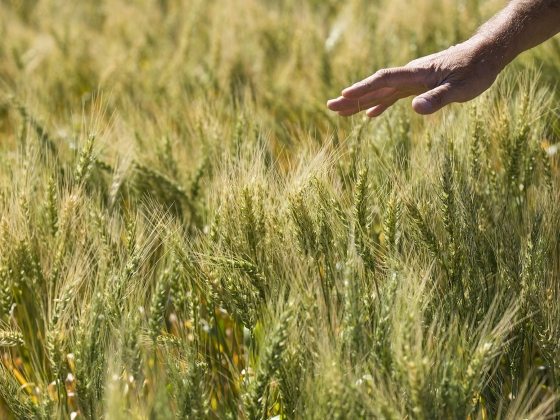World grows more durum

Filippo Bertuzzi, senior analyst with Areté, an Italian agri-food intelligence company, said durum production will be up in major importing regions, such as the European Union and North Africa, while it is expected to fall in the major exporting countries, like Canada and the United States.
Filippo Bertuzzi has a “slightly bearish” outlook for 2021-22 durum prices but it comes with the caveat that there are still some pretty big unresolved questions.
The senior analyst with Areté, an Italian agri-food intelligence company, said world production of the crop is expected to rise.
But where it is rising is important, he told delegates attending the International Grains Council’s Grains Conference 2021.
Production will be up in major importing regions, such as the European Union and North Africa, while it is expected to fall in the major exporting countries, including Canada and the United States.
That will result in reduced world imports of the crop and larger ending stocks. Thus the bearish outlook.
However, there are a number of questions to be sorted out before the durum market finds its footing.
The first is how actual planted area in Canada and the U.S. will stack up to planting intentions.
The U.S. Department of Agriculture forecasts 1.54 million acres of U.S. durum, a nine percent drop from last year.
But Bertuzzi thinks growers in the Northern Plains may have switched from corn and soybeans and into durum due to severe drought in that region.
He believes the actual decline will be closer to three or four percent.
Statistics Canada forecasts 5.7 million acres in Canada, the same as last year.
Bertuzzi said both exporting countries will update their acreage estimates in late-June.
Canadian production is expected to fall nine percent to 6.01 million tonnes, while U.S. output will drop 20 percent to 1.5 million tonnes.
That leads to another question: how much will drought impact North American production?
Bertuzzi said production could be much smaller than he forecasts if drought conditions persist.
He believes U.S. yields already appear to be below average, while the Canadian crop could still achieve average yields if it receives timely rainfall.
It is a similar situation in Turkey, where it has been abnormally dry since seeding. Right now, Bertuzzi forecasts slightly smaller production than last year at around 3.5 million tonnes but that is subject to change.
Imports are forecast to rise in Turkey but they would really take off if drought causes another 2019-20 type of crop wreck in the country.
He forecasts a sizeable rebound in the EU-27 crop to about 7.75 million tonnes and a steep reduction in the region’s imports.
Morocco is harvesting a huge crop after two years of drought-ravaged production. Imports for that country will be halved.
Algeria’s production will be down but imports will remain the same due to higher carry-in supplies. Tunisia’s production will be up and its imports will fall, Bertuzzi predicts.
Levels of pasta consumption, after an up-and-down 2020, are another question.
Worldwide consumption increased substantially in the first half of year due to COVID-19 panic buying and then dropped off considerably in the second half.
Bertuzzi expects consumption to return to pre-COVID levels in 2021, although it looks to be off to a sluggish start in the first few months.
The last big question for the durum market is what EU planting will be like in the fourth quarter of 2021.
Last year growers in Italy and France increased acres because durum prices were at a huge premium to wheat and corn.
The premium in Italy was 42 percent over wheat prices and 51 percent over corn. That premium narrowed to 21 percent over wheat and eight percent over corn in May, which could result in lower plantings in 2021.
Read also
Wheat in Southern Brazil Impacted by Dry Weather and Frosts
Oilseed Industry. Leaders and Strategies in the Times of a Great Change
Black Sea & Danube Region: Oilseed and Vegoil Markets Within Ongoing Transfor...
Serbia. The drought will cause extremely high losses for farmers this year
2023/24 Safrinha Corn in Brazil 91% Harvested
Write to us
Our manager will contact you soon



